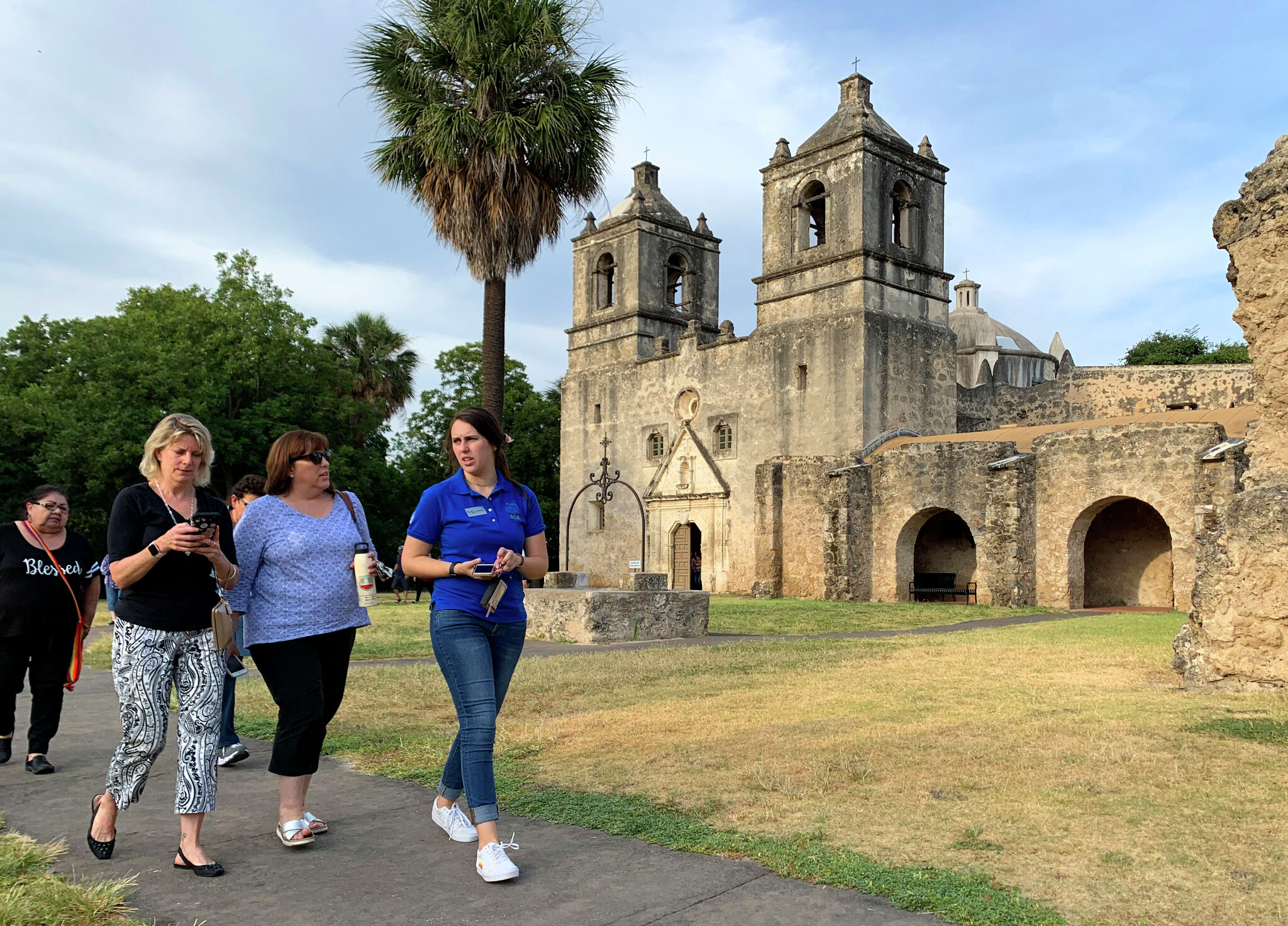
ARE HOTTER SUMMERS TAKING A TOLL ON VISITS TO SAN ANTONIO MISSIONS NATIONAL HISTORICAL PARK SITES?
Climate change could be taking a toll on the popularity of the San Antonio Missions National Historical Park.
Visits to the missions declined again in 2023 — a year with record-breaking heat during the summer and fall tourist season — even as foot traffic at other sites in the National Park System increased.
That meant less spending at hotels, restaurants, stores and other businesses around the San Antonio historic sites. Park patrons — many of whom live outside the San Antonio area and drive here to visit — shelled out $95 million in 2023, down 3.3% from 2022 and 8.6% from 2021, new data from the National Park Service show.
Nearly 1.2 million people visited Mission Concepción, Mission San José, Mission San Juan and Mission Espada last year, down 4.6% from 2022 and 11.5% from 2021, according to the federal agency. It was the second consecutive year of decline.
RELATED: San Antonio trolley operator buys historic Alamo Plaza building downtown
The Alamo, which draws more than 1.6 million visitors annually, is not part of the historic park.
The National Park Service does not collect data on why people choose to visit or not visit parks. But some facts provide clues to the back-to-back slowdowns.
People flocked to the missions and other attractions in the wake of the pandemic as part of a national resurgence in tourism that became known as “revenge travel” but that increase quickly faded. Among the reasons: High inflation since 2022 has been eating into families’ budgets for travel and international tourism has been slow to rebound since the pandemic.
Weather could also be keeping them away, as 2023 was the hottest year ever recorded in San Antonio.
The city had a record-breaking 75 days of triple-digit temperatures last year — and 17 with temperatures of 105 degrees or hotter. Summer-like temperatures persisted into the fall, with an average high temperature of more than 98 degrees in September, the hottest on record. Family tourism is highest in the summer but convention visitations peaks in the fall.
The visit slowdown comes despite the state-owned Alamo and the four federally run missions being designated as the state’s only World Heritage Site in 2015.
RELATED: Luxury InterContinental hotel opens with dining options in downtown San Antonio
Those involved in the years-long effort to secure the designation said it would attract millions more tourists to the area. A report prepared by the Harbinger Consulting Group estimated that the designation would generate from $44 million to $105 million in additional economic activity and more than 1,000 jobs.
The city now has a World Heritage office responsible for marketing the missions. Asked for an interview to discuss potential factors behind the two-year declines in attendance and spending, Colleen Swain, who leads the office, directed a reporter to the National Park Service and Visit San Antonio, the city’s tourism marketing organization.
International travelers generally have more appreciation for the World Heritage designation compared with domestic travelers and seek out such sites, according to Visit San Antonio. The organization is seeking to draw more visitors from abroad as they tend to stay longer and spend more money while here than domestic travelers.
In recent years, Visit San Antonio has put an increasing focus on selling the city’s history and multicultural heritage to international visitors and conventioneers. In 2022, the tourism marketing organization opened its first overseas office in London with a goal of generating nearly $60 million per year in economic impact from travelers from the United Kingdom by 2025.
RELATED: Kimpton hotel, the brand’s largest in Texas, set to open amid wave of downtown development
Christine Jacobs, superintendent of the missions, issued a statement: “San Antonio Missions National Historical Park not only protects and preserves the cultural heritage, historical structures, archaeological resources, and natural landscapes but also plays a vital role in supporting the local economy,” she said.
Visits to the missions peaked in 2009 at 1.56 million. About 1.3 million people went to the park in 2016, the year after the missions became a World Heritage Site. Traffic inched up in 2017 but then dipped below 1.3 million in 2018 and 2019 and below 1.2 million in 2020 during the pandemic.
Nationwide, just more than 325 million visitors went to national parks in 2023 and spent $26.4 billion at businesses nearby. That was up 4% and 10.4%, respectively, from 2022. The most visited sites in the system last year were Blue Ridge Parkway, Golden Gate National Recreation Area, Great Smoky Mountains National Park, Gateway National Recreation Area and Gulf Island National Seashore.
In Texas, traffic increased 3.3% at Guadalupe Mountains National Park and 3.9% at Padre Island National Seashore but fell nearly 1% at Big Bend National Park. All three sites see far fewer visitors than the missions.
2024-09-05T21:31:40Z dg43tfdfdgfd